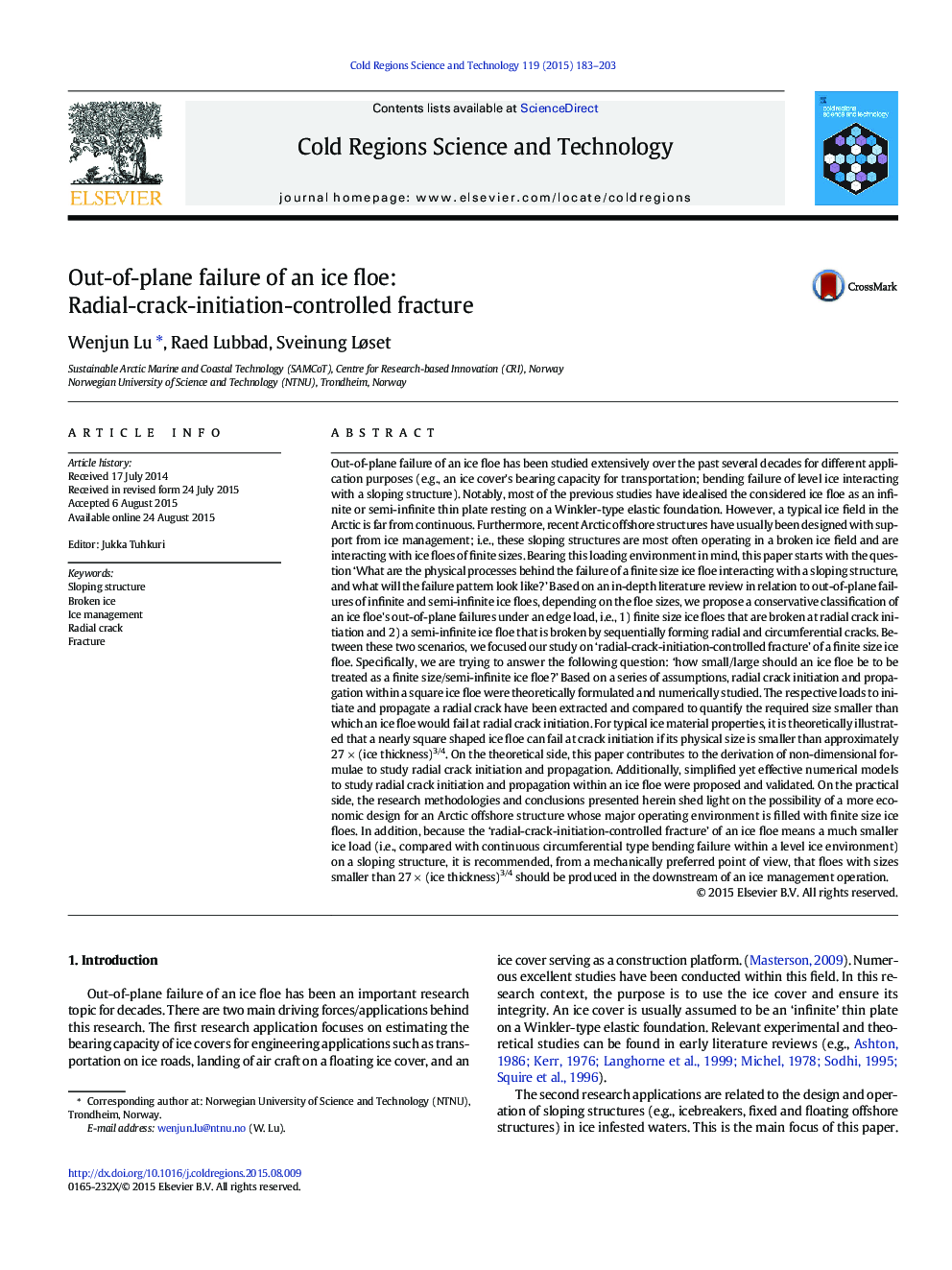| Article ID | Journal | Published Year | Pages | File Type |
|---|---|---|---|---|
| 6426764 | Cold Regions Science and Technology | 2015 | 21 Pages |
Abstract
Out-of-plane failure of an ice floe has been studied extensively over the past several decades for different application purposes (e.g., an ice cover's bearing capacity for transportation; bending failure of level ice interacting with a sloping structure). Notably, most of the previous studies have idealised the considered ice floe as an infinite or semi-infinite thin plate resting on a Winkler-type elastic foundation. However, a typical ice field in the Arctic is far from continuous. Furthermore, recent Arctic offshore structures have usually been designed with support from ice management; i.e., these sloping structures are most often operating in a broken ice field and are interacting with ice floes of finite sizes. Bearing this loading environment in mind, this paper starts with the question 'What are the physical processes behind the failure of a finite size ice floe interacting with a sloping structure, and what will the failure pattern look like?' Based on an in-depth literature review in relation to out-of-plane failures of infinite and semi-infinite ice floes, depending on the floe sizes, we propose a conservative classification of an ice floe's out-of-plane failures under an edge load, i.e., 1) finite size ice floes that are broken at radial crack initiation and 2) a semi-infinite ice floe that is broken by sequentially forming radial and circumferential cracks. Between these two scenarios, we focused our study on 'radial-crack-initiation-controlled fracture' of a finite size ice floe. Specifically, we are trying to answer the following question: 'how small/large should an ice floe be to be treated as a finite size/semi-infinite ice floe?' Based on a series of assumptions, radial crack initiation and propagation within a square ice floe were theoretically formulated and numerically studied. The respective loads to initiate and propagate a radial crack have been extracted and compared to quantify the required size smaller than which an ice floe would fail at radial crack initiation. For typical ice material properties, it is theoretically illustrated that a nearly square shaped ice floe can fail at crack initiation if its physical size is smaller than approximately 27Â ÃÂ (ice thickness)3/4. On the theoretical side, this paper contributes to the derivation of non-dimensional formulae to study radial crack initiation and propagation. Additionally, simplified yet effective numerical models to study radial crack initiation and propagation within an ice floe were proposed and validated. On the practical side, the research methodologies and conclusions presented herein shed light on the possibility of a more economic design for an Arctic offshore structure whose major operating environment is filled with finite size ice floes. In addition, because the 'radial-crack-initiation-controlled fracture' of an ice floe means a much smaller ice load (i.e., compared with continuous circumferential type bending failure within a level ice environment) on a sloping structure, it is recommended, from a mechanically preferred point of view, that floes with sizes smaller than 27Â ÃÂ (ice thickness)3/4 should be produced in the downstream of an ice management operation.
Keywords
Related Topics
Physical Sciences and Engineering
Earth and Planetary Sciences
Earth and Planetary Sciences (General)
Authors
Wenjun Lu, Raed Lubbad, Sveinung Løset,
